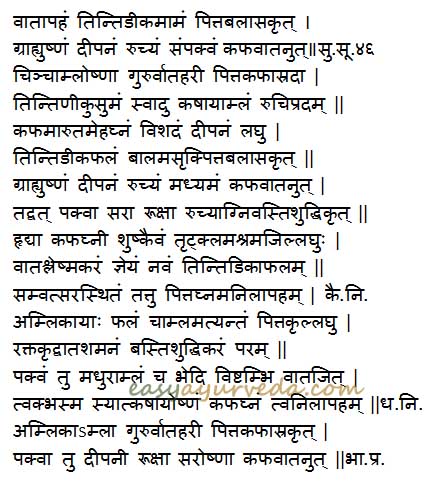Tintideeka Rhus parviflora Benefits, Remedies, Research, Side Effects
Tintidika- Rhus parviflora is a herb mentioned in the ayurvedic pharmacopoeia for the treatment of thirst, lack of appetite, diarrhea, increased micturition and diseases of the cardiac muscles.
Latin name- Rhus parviflora Roxb.
Family- Anacardiaceae
Table of Contents
Vernacular names
Names in different languages:
Hindi name-Samakdana, Samakdan
English name- Sumac
Punjabi name- Khatte Masoor
Unani name- Posth Sumac
Marathi name – Samaka Kadana
Nepali name – Satibair
Kashmiri name – Samak
Sanskrit synonyms
Amlika- The fruit is sour in nature
Sinchamla, Amlantaki, Bita, Shukta, Shuktika, Chanda, Chukrika, Stambhainika, Tintrini, Sutittidi,
Dantashata – due to sourness, produces tingling sensation in teeth
Classical categorization
Bhavaprakasha- Amradi phala varga
Dhanvantari Nighantu- Amradi varga
Kaiyyadeva Nighantu- Oushadhi varga
Scientific classification
Kingdom: Plantae
Order:Sapindales
Family: Anacardiaceae
Subfamily: Anacardioideae
Genus: Toxicodendron
Morphology
Tintidika is a small tree growing to a height of 12-15 feet. It is found in the foothills of Himalaya and South India. The flower grows in clusters with reddish flowers. The fruits are small, little flat and are found in the month of May- August.
Properties, part used, dosage
Rhus parviflora medicinal properties:
Rasa (Taste) – Amla (Sour)
Guna (Qualities) – Laghu (Light for digestion), Ruksha (Dry in nature)
Veerya (Potency) – Ushna (Hot)
Vipaka – Amla (Undergoes sour taste after digestion)
Karma (Actions) –Vata shamaka (reduces vitiated vata dosha), Kapha Pitta vardaka (increase kapha and pitta dosha)
Part used- Fruit
Dosage- 3-6 g
Chemical constituents
The leaves contain the ?avonoids, myricetin, quercetin and kaempferol and their 3-O-rhamnosides; the stems and leaves also gave hentriacontane, hentriacontanol, beta-sitosterol, ligno- ceric acid and iso-rhamnetin-3-alpha- L-arvinoside.
Bhavaprakasha has identified Amlika and Vrukshamla has Tintideeka
Uses, Sanskrit verse
Uses of Tintidika:
- The paste prepared from the dried bark of Rhus parviflora is used as local applicant over forehead to treat sinusitis.
- The cold infusion prepared from the bark and fruit of the plant is used for gargling in gingivitis and looseness of the tooth.
- The decoction prepared from the bark of the plant is given in a dose of 40-50 ml to treat excessive micturition.
- The cold infusion from the fruits of the plant is given in cases of burning sensation due to fever.
- The juice prepared using the fruit of Rhus parviflora is added with date fruit, tamarind, gooseberry, pomegranate seed is given to patients suffering from alcoholism.
- The dried powder of the bark is given in dose of 3-5 g with buttermilk to treat indigestion, diarrhea, nausea and lack of appetite.

Qualities, Benefits
Qualities and benefits of Rhus parviflora as per Ayurveda:
Unripe fruit:
Vatahara – useful in treating disorders of Vata Dosha imbalance such as neuralgia, paralysis, constipation, bloating, etc But increases Kapha Pitta Dosha.
Grahi – absorbent, useful in diarrhea, IBS
Ushna – hot
Deepana – improves digestion strength
Ruchya – improves taste, relieves anorexia.
Moderately ripe fruit:
Balances Kapha Vata Dosha
Ripe fruit:
Balances Kapha Vata Dosha
Sara – induces mobility, causes diarrhea, purgation, relieves constipation
Rooksha – dryness
Ruchikrut – improves taste, relieves anorexia
Agnikrut – Improves digestion strength
Vastishuddhikrut – cleanses bladder
Hrudya – acts as cardiac tonic, congenial for heart
Dried fruit:
Indicated in
Trut – excessive thirst
Klama – tiredness
Shrama – tiredness, fatigue
One year old fruit balances Pitta and Kapha Dosha.
Flower:
Svadu – sweet
Kashaya – astringent
Amla – sour
Balances Kapha and Vata Dosha
Indicated in
Meha – diabetes, urinary tract disorders
Vishada – clarity
Deepana – improves digestion strength
Laghu – light to digest
Adverse effects
Adverse effect- Excessive use of Tintidika can cause hyperacidity and regurgitation.
Interaction with medicines, supplements
Can this be used while taking Homeopathic medicine?
Yes. This product does not react with homeopathic medicine.
Can
this medicine be continued while taking supplements like multivitamin tablets,
Omega 3 fatty acids etc?
Yes. Generally, this product goes well with most
of the dietary supplements. However, if you are taking more than one product
per day, please consult your doctor for an opinion.
With western
medicines
Seek your
doctor’s advice if you are taking this product along with other western
(allopathic / modern) medicines. Some Ayurvedic herbs can interact with modern
medicine.
If both Ayurvedic and allopathic medicines are advised together, then it is
best to take Allopathic medicine first, wait for 30 minutes and then take the
Ayurvedic medicine.
Ayurvedic formulations
Formulations containing Tintidika:
Vyoshadi vati: Vyoshadi Vatakam is an effective Ayurvedic medicine for cold, cough and such other respiratory diseases. It is in tablet or granules form. It is also known as Vyoshadi Vati.
Hinguvachadi choorna: Hinguvachadi Choornam is an Ayurvedic medicine, in herbal powder form. It is used in Ayurvedic treatment of indigestion, bloating and abdominal pain.
Yavani shadava choorna: Yavani Shadava Churna is an Ayurvedic medicine, in herbal powder form. It is used to treat constipation, adbominal pain due to digestion imbalance and bloating.
Research
Research articles about Rhus parviflora:
Anti- HIV-1 activity: In the present study, extracts prepared from the leaves of Rhus parviflora Roxb. (Anacardiaceae) were evaluated for their anti-HIV activity. Both aqueous (IC50?=?15 ?g/ml) and 50% ethanolic (IC50?=?26 ?g/ml) extracts prepared from leaves of R. parviflora showed anti-HIV activity in TZM-bl cells wherein the virus was treated with the extracts prior to infection. Further, both the extracts also inhibited virus load in HIV infected CEM-GFP cells and human PBLs. The anti-HIV activity is mediated through inhibition of HIV-1 protease activity.
Author: Dr.B.K.Prashanth M.D (Ayu), Ph.D
E mail: [email protected]










